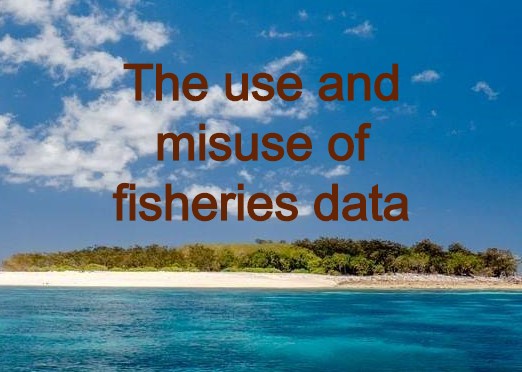Seeking balance – the use and misuse of data

The way in which successive governments have collected data on recreational fishing has been haphazard at best and negligent at worst. The estimate of the number of Queenslanders recreational fishers have been stated as:
- Recreational survey data estimate = 746,600 in 2000.
- Recreational survey data estimate = 703,000 in 2010.
- Recreational survey data estimate = 641,800 in 2013.
- Recreational survey data estimate = 942,800 in 2019.
Between 2000 and 2013 the trend away from recreational fishing was a decline of approximately 14% per year. However, survey data released in 2019 broke the trend and suggested a growth of almost 7.8% per year between 2013 and 2019 in recreational fishing participation.
What factors lead to a downward trend in recreational fishing occur?
- Sutton et al (2011) argued that a lack of time, loss of interest, and poor fishing quality were factors. The authors also argued that most lapsed fishers interested in returning to fishing cited too many commitments, lack of knowledge about fishing regulations, and lack of fishing partners as reasons preventing them from fishing.
- According to Winstanley (2019) since the 2000-01 National Recreational Fishing Survey and statewide surveys have indicated a decline in the participation rates in recreational fishing . The author notes that ,’Despite population growth, fewer people are fishing and the numbers of fish they catch are declining. For example, a NSW statewide survey estimated that, along with declining fisher numbers, between 2000/01 and 2012/13, the numbers of every targeted scalefish, including stocked species, decreased. In Tasmania, across three surveys since 2000/01, participation fell by 22 percent and the total number of fish caught fell by 35 percent’.
What can explain the changes in participation in Queensland between 2013 and 2019 given a steady decline before 2013? Many factors need to be considered including:
- Sample bias – it is possible that the individuals sampled were more likely to participate in recreational fishing and therefore any interpretations should be treated with caution. Remember that the fisher surveys did not sample 942,700 individuals. This number was derived from 10,600 recreational fishing households (see: Statewide recreational fishing surveys).
- Data collected at 4 different points in time, 2000 / 2010 / 2013 / 2019 does not allow for a detailed comparison on a yearly basis.
In essence the Queensland public still have no data on:
- Impacts of recreational fishing; or
- Impacts of recreational on species of conservation interest.
A key reason for this is that neither major party in this state wants to discuss this issue for fear of the debate it may generate. It seems that if you are a food producer your impacts on the marine environment matters more than that of recreational fishing. Fisheries Queensland knows the exact number of commercial fishers working at any time of day or night but has no clue of the number of recreational fishing effort in the same marine environment.
If we are going to develop harvest strategies fisheries mangers need as much data as possible to make informed decisions. The current fisheries management climate is one that relies on rubbery recreational fishing data. The public expects more but is receiving less than optimal fisheries management.
So when politicians amongst the major parties talk about ‘finding a balance between recreational and commercial fishing’ what do they really mean? It means removing commercial fisher access to viable fishing grounds and creating recreational only fishing regions.
We will achieve balance when sectors can have dialogue and act as good will stakeholders. Under current arrangements political parties pay too much attention to recreational groups to the long-term detriment of the commercial harvest of a renewable resource. These groups do not represent the views of all recreational fishers and the irony is that the hard work of Queensland commercial fishers helps to provide seafood to a market with consumers who recreationally fish and those that cannot fish across our community.
The impacts of COVID-19 have led to a resurgence in consumers looking for local food production – during the current pandemic you would think a focus on food producers is critically important. Unfortunately the fall back for political parties is where their votes are not what is best for the interests of the community. Keep an eye out for anti-commercial fishing policies in the lead up to the 2020 State election.
Author: Queensland Seafood Industry Association (QSIA)
Image: QSIA
References
- Department of Agriculture and Fisheries 2020, QFish. Link: https://qfish.fisheries.qld.gov.au/query/recreational-participation-by-region/table
- Department of Agriculture and Fisheries 2020, Statewide recreational fishing surveys. Link: https://www.daf.qld.gov.au/business-priorities/fisheries/monitoring-compliance/monitoring-reporting/recreational-fishing/statewide-recreational-fishing-surveys
- Sutton, S.G., Dew, K. and Higgs, J. (2009), Why Do People Drop Out of Recreational Fishing? A Study of Lapsed Fishers from Queensland, Australia. Fisheries, 34: 443-452. Link: https://afspubs.onlinelibrary.wiley.com/action/showCitFormats?doi=10.1577%2F1548-8446-34.9.443
- Winstanley, R. (2019), A wake-up call for recreational fishing in Australia. Link: https://setfia.org.au/a-wake-up-call-for-recreational-fishing-in-australia/
The content of this post is provided for information purposes only and unless otherwise stated is not formal QSIA policy. The information on these posts are provided on the basis that all persons accessing the information undertake their own responsibility for assessing the relevance and accuracy of it.

